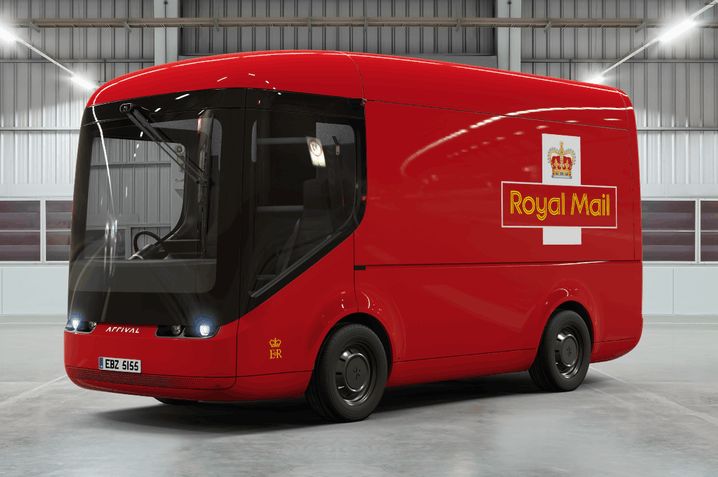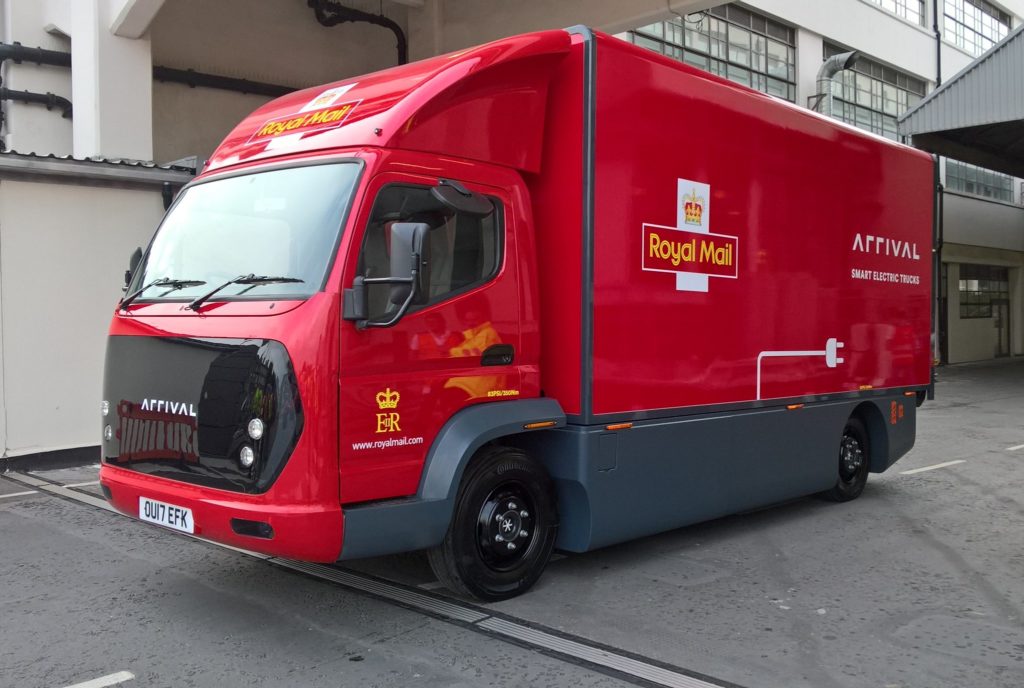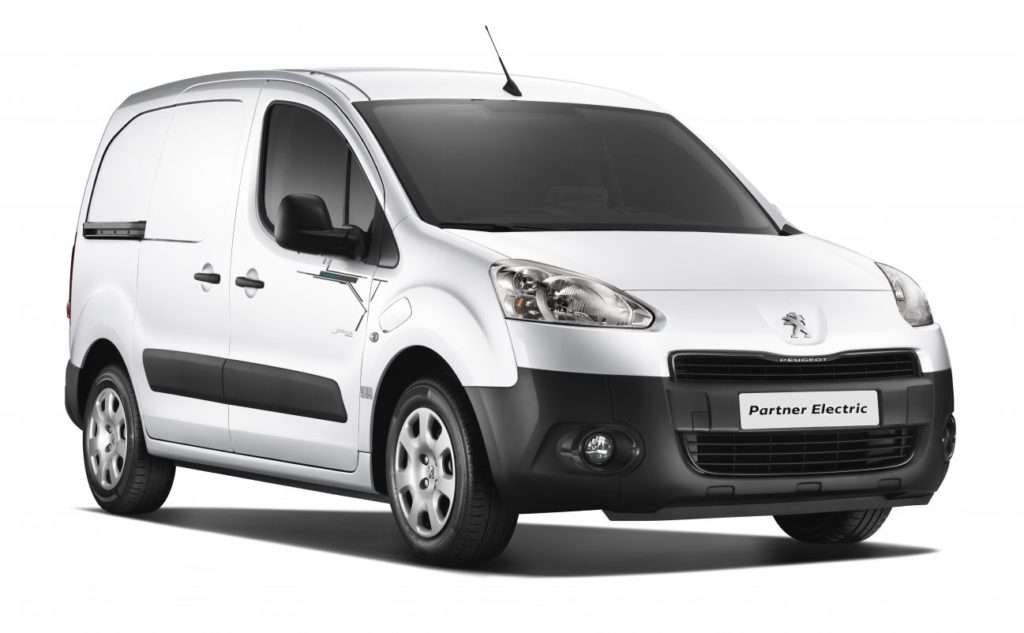
Last-mile services and urban or stop-and-go driving such as mail delivery are perfect applications for electric vehicles because these conditions provide the optimal mileage per kilowatt-hour. With today’s falling battery prices, along with unpredictable oil prices and the health hazards presented by tailpipe emissions, there is little excuse for light-duty vehicles such as mail trucks not to convert to electricity.
In addition, lacking most of the complex systems and parts found in vehicles powered by an internal combustion engine (e.g., engine, transmission, fuel pump, catalytic converter), the Royal Mail’s electric vehicles will enjoy sharply-reduced operating expenses even before fuel is taken into consideration.
Silent, clean, and inexpensive to operate, the Royal Mail’s zero-tailpipe-emission vehicles will be supplied by Arrival (nine vehicles now beginning a one-year trial period, pictured above) and Peugeot (100 Partner L2 Electric vans, expected by year-end, pictured below).

The ~100 mile all-electric range being tested will be sufficient for a typical mail route, especially because regenerative braking recharges the battery throughout a day’s journey. When driven at slow speeds or with frequent stops, such as in urban environments or on mail delivery routes, electric vehicles are exceptionally efficient. And when the vehicles return to the depot, they can be easily charged using electricity priced at a less-expensive off-peak rate.
The Peugeot is charged with a Level 2 charger (for overnight) or a CHAdeMO direct current fast charger (providing an 80 percent fill-up in 30 minutes if starting from empty). As an alternative to grid power, the large roofs at mail facilities may offer the prospect of these vehicles being truly 100% emission free by utilizing rooftop solar panels, storing the energy in batteries during the day, and then using that energy to charge the delivery vehicles overnight.
Paul Gatti, Royal Mail Fleet Director, said: “Our research has shown that electric vans are a good operational fit with our business and we are delighted to be ordering such a large volume to use in our daily operations. This is good news for our customers and the towns and cities which we serve. It also means we are on the front foot for future changes in emissions legislation. Emissions are an important issue for us at Royal Mail and we are continuously looking at new and innovative ways to reduce our carbon footprint and our impact on air quality. Improving the efficiency of our fleet by introducing electric vans is just one example of this.”
The delivery vehicle specs are modest compared to a passenger vehicle such as the BMW i3, which generates 170 horsepower from a 125 kW motor producing 184 pound-feet of torque. The electric Partner, by comparison, produces 67 horsepower from a 49 kW motor with maximum torque of 148 pound-feet. But the Royal Mail’s vehicles’ moderated performance will provide reliable operation that is environmentally friendly, safe, and highly energy-efficient.
I invite you to view my other posts and sign up to receive future posts via email. I also invite you to follow me on LinkedIn and Twitter, and to contact me via my homepage.
